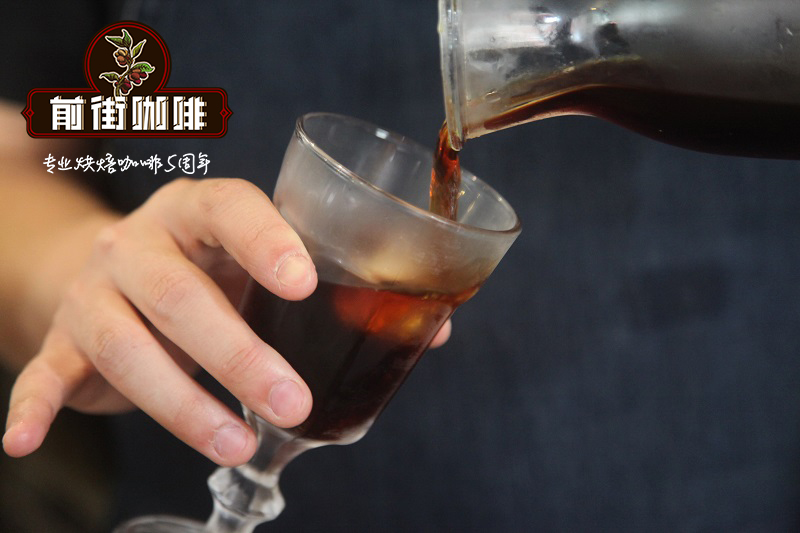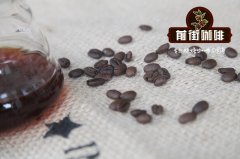Brazilian coffee brand recommendation Santos and Santos coffee bean flavor characteristics of the difference

Professional coffee knowledge exchange more coffee bean information please follow the coffee workshop (Wechat official account cafe_style)
Although Brazil produces 30 to 35% of the world's coffee annually, ranking first in the world, none of the Brazilian beans can be called the top coffee.
The mountains are covered with coffee trees in southern Brazil, but Santos is the only one that can be put on the table; most of the other hastily processed beans are used to make instant coffee and easy-to-open coffee.
Brazilian taxi (Santos) Santos coffee grows in the Sao Paulo (Sao Paulo) area, under the name of export port Santos (Santos). It has a mild and smooth taste, low acidity, moderate mellow, light sweetness, no special advantages and no obvious disadvantages. These soft flavors are mixed together, and to distinguish them one by one is the best test for the taste buds, which is why many Santos fans love this kind of coffee.
All coffee produced in Brazil in South America is generally called Brazilian coffee. The land area of Brazil is the fifth largest country in the world, with an area between the equator and the Tropic of Cancer, which is suitable for growing coffee. In recent years, the total output of coffee is more than 40 million bags (each bag of 60kg), accounting for about 35% of the world's total.
Brazilian coffee is mainly produced in the southern states of Sao Paulo (Sao Paulo), Panama (Parana), Minas Gerais (Minas Gerais) and Espirito Santo, among which Sao Paulo and Panama are the main producing areas. Due to the proximity to the Tropic of Cancer, there is occasional risk of frost damage in winter. If frost damage occurs, it will have a great impact on the international market of coffee.
Brazil has a vast territory and a large production of coffee, so in addition to the general name of Brazilian coffee, it is divided into the following four categories according to its export ports:
1. Brazilian Santos Coffee: exported by Port Santos (Santos) in the state of Sao Paulo, it is the most productive and of the best quality in Brazil. The main producers are the states of Sao Paulo and Panama. Because it is located in the south of Brazil and is vulnerable to frost, when winter comes in the depths of July, the price of coffee often soars several times overnight.
Santos coffee is characterized by its neutral taste, slightly bitter taste and weak acidity, can be matched with any kind of coffee beans, and has the characteristics of synthesizing all kinds of coffee flavors. Santos coffee is an indispensable kind of coffee. Santos coffee is also compiled into 2-5 according to the number of bad beans per 500 grams.
2. Rio Coffee (Brazilian Rio Coffee): named after the export of the port of Rio de Janeiro. Granules and Santos coffee beans are relatively large, strong taste, there is a kind of irritating bad smell to the tongue, called Rio Flavor, but after long-term storage, the irritation will be weakened, the flavor becomes rich with a sense of glycol, called Golden Golden Rio.
In addition to the above two kinds of coffee, Brazil also has Victoria coffee exported from the port of Victoria (Victoria) and Bashiya coffee exported from the port of Bahia (Basiya), but both are of poor quality.
Qianjie coffee: Guangzhou bakery, the store is small but a variety of beans, you can find a variety of unknown beans, but also provide online store services. Https://shop104210103.taobao.com
Important Notice :
前街咖啡 FrontStreet Coffee has moved to new addredd:
FrontStreet Coffee Address: 315,Donghua East Road,GuangZhou
Tel:020 38364473
- Prev

Is the mochabashantos good? how much is the Brazilian bourbon Santos coffee?
Professional coffee knowledge exchange more coffee bean information please follow the coffee workshop (Wechat official account cafe_style) Brazil, the world's largest coffee producer, Brazil produces famous coffee Brazil Santos Coffee, just as coffee, football and samba are the representatives of Brazil, and Brazilian Santos Coffee can be said to represent Brazilian coffee representatives. Santos comes from the port where coffee is shipped.
- Next

Santos coffee grinder grinding scale _ Brazil Santos good? _ Santos Coffee Price
Professional coffee knowledge exchange more coffee bean information please follow the coffee workshop (Wechat official account cafe_style). Brazil: named after the producing country, produced in South America, also known as Santos, Brazil is the world's largest coffee producer. Features: when the coffee bean germ is very fresh, it is artificially refined and naturally dried in the vulva for about 60-70 days, so that the flesh is fully sweet.
Related
- Detailed explanation of Jadeite planting Land in Panamanian Jadeite Manor introduction to the grading system of Jadeite competitive bidding, Red bid, Green bid and Rose Summer
- Story of Coffee planting in Brenka region of Costa Rica Stonehenge Manor anaerobic heavy honey treatment of flavor mouth
- What's on the barrel of Blue Mountain Coffee beans?
- Can American coffee also pull flowers? How to use hot American style to pull out a good-looking pattern?
- Can you make a cold extract with coffee beans? What is the right proportion for cold-extracted coffee formula?
- Indonesian PWN Gold Mandrine Coffee Origin Features Flavor How to Chong? Mandolin coffee is American.
- A brief introduction to the flavor characteristics of Brazilian yellow bourbon coffee beans
- What is the effect of different water quality on the flavor of cold-extracted coffee? What kind of water is best for brewing coffee?
- Why do you think of Rose Summer whenever you mention Panamanian coffee?
- Introduction to the characteristics of authentic blue mountain coffee bean producing areas? What is the CIB Coffee Authority in Jamaica?

